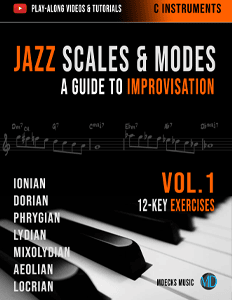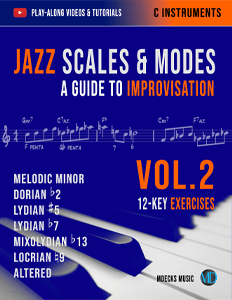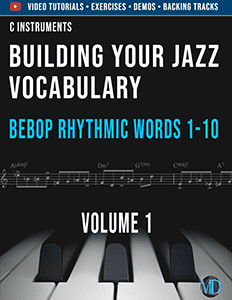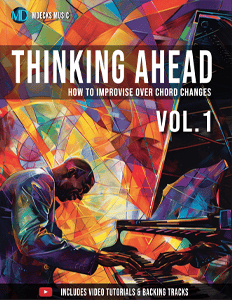Jazz Scales & Modes: A Guide To Improvisation
Welcome to our comprehensive jazz scales for improvisation course, where we dive deep into the art of improvisational skills through an exploration of three fundamental source scales: the Major scale (Ionian), the Melodic Minor scale, and the Harmonic Minor scale. These scales, each composed of seven unique notes, serve as the foundation for a rich tapestry of musical modes, each contributing its distinct color and sonic quality to enhance your improvisational endeavors.
In Volume 1 of this course, our primary focus revolves around the seven modes originating from the Ionian scale, also known as the major scale. These modes: Ionian, Dorian, Phrygian, Lydian, Mixolydian, Aeolian, and Locrian; are unraveled in dedicated lessons. Each lesson explores the intricacies of one mode, discussing its characteristics, appropriate contexts, techniques for application, and providing step-by-step exercises to master the mode in various keys, offering a comprehensive perspective.
In Volume 2 of this course, our primary focus revolves around the seven modes originating from the Melodic Minor scale. These modes: Melodic Minor, Dorian b2, Lydian #5, Lydian b7, Mixolydian b13, Locrian natural 9 and Altered; are one of the best modes for jazz improvisation. Each lesson explores the intricacies of one mode, discussing its characteristics, appropriate contexts, techniques for application, and providing step-by-step exercises to master the mode in various keys, offering a comprehensive perspective.
An integral part of our course is the practice sessions, where you engage in a call-and-response exchange with a pianist. This interactive element ensures a dynamic learning experience and helps you apply the theoretical knowledge in a practical setting.
Upon completion of this course, you will effortlessly navigate through these modes, gaining a thorough understanding of their utility in improvisation. To make the most of this learning experience, follow these steps:
1. Watch the Lesson: Learn about the properties of each mode, when to use it, and how to practice it.
2. Call-and-Response Practice: Utilize the call-and-response video to practice the multi-step exercise for each mode in all keys. Daily practice is recommended until you can comfortably play along with the demo video.
3. Supplementary Exercises: Incorporate two supplementary warm-up exercises into your daily routine. These transformation exercises guide you through all modes and keys around the circle of fifths, emphasizing the simplicity of transitioning between modes with minimal note changes.
Embark on this journey to elevate your improvisational skills, and by the end of the course, you'll possess the knowledge and proficiency to weave captivating musical narratives with ease. Join us and explore the fascinating world of musical modes and improvisation.



















